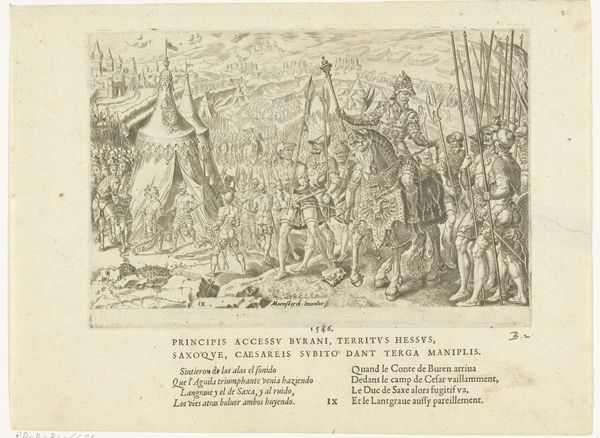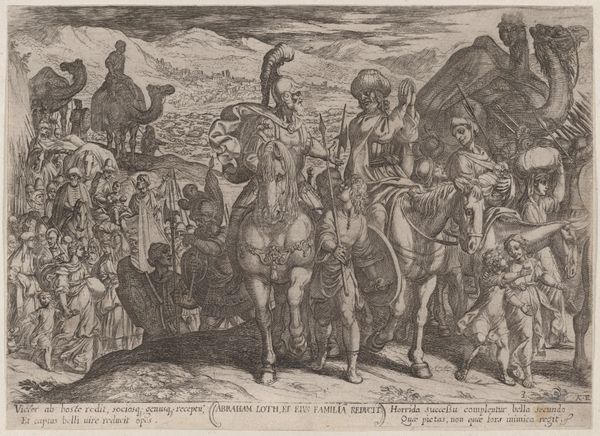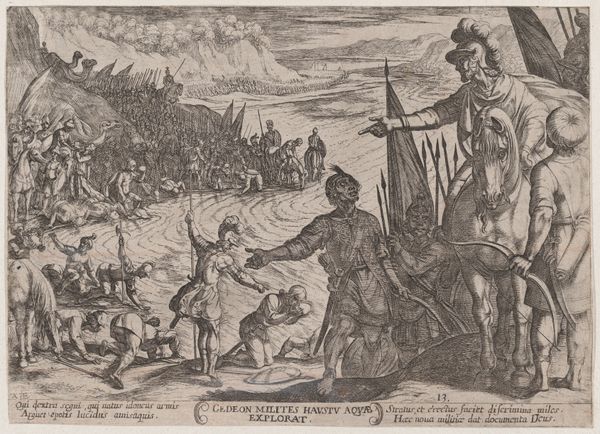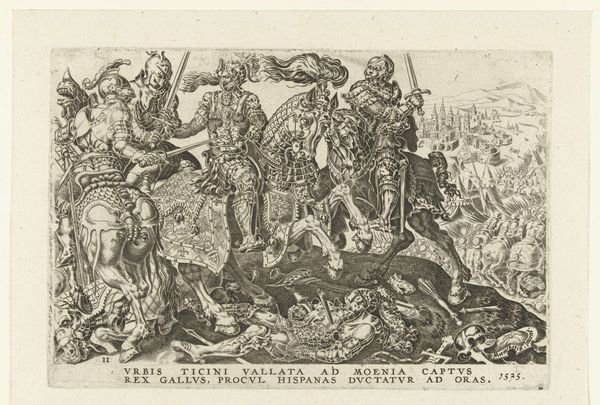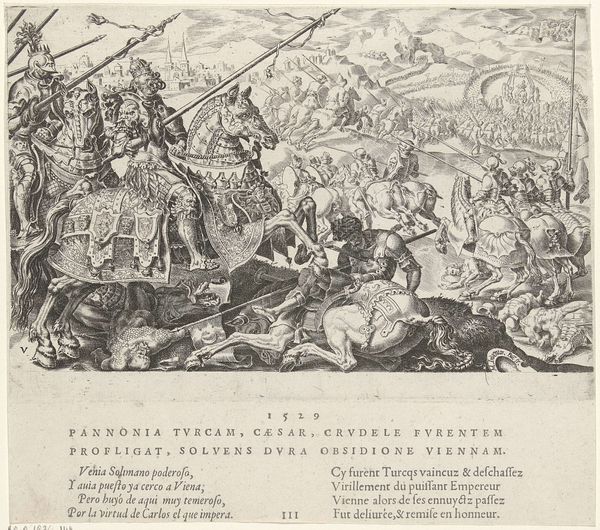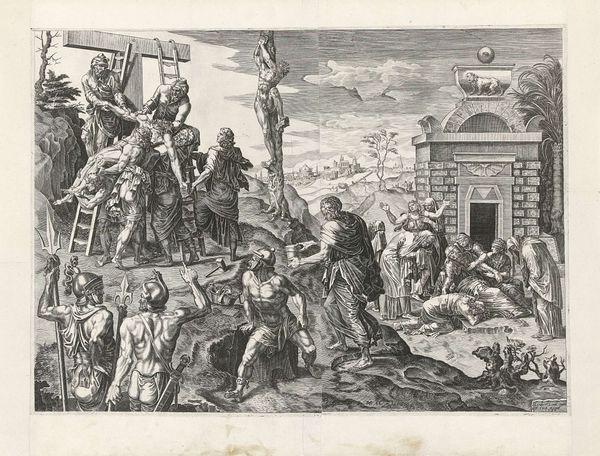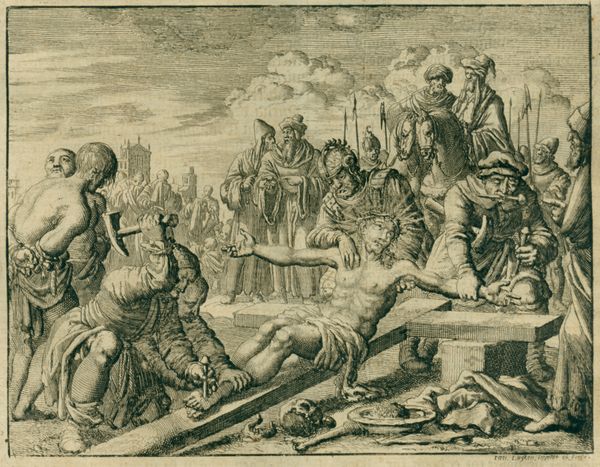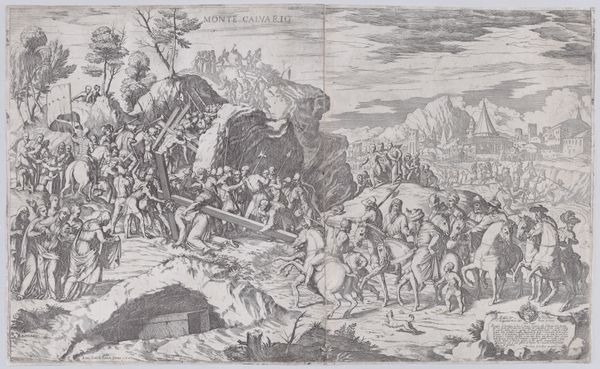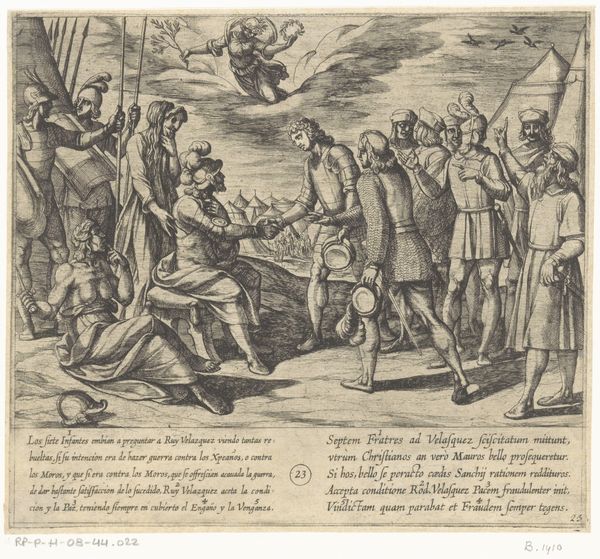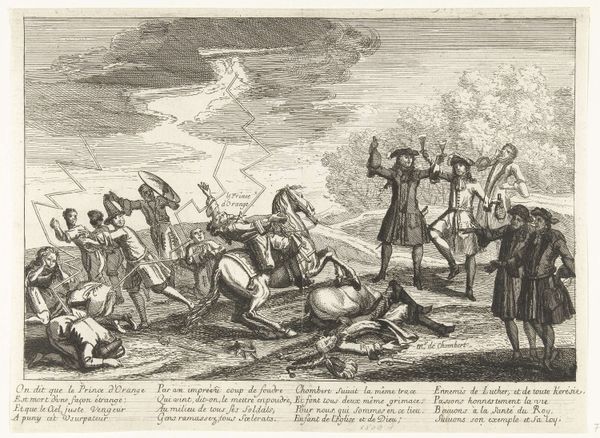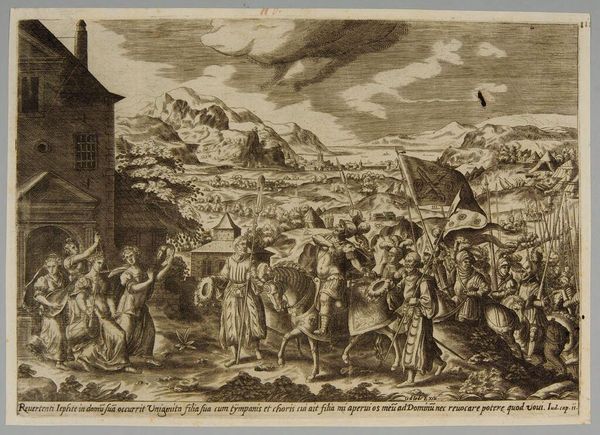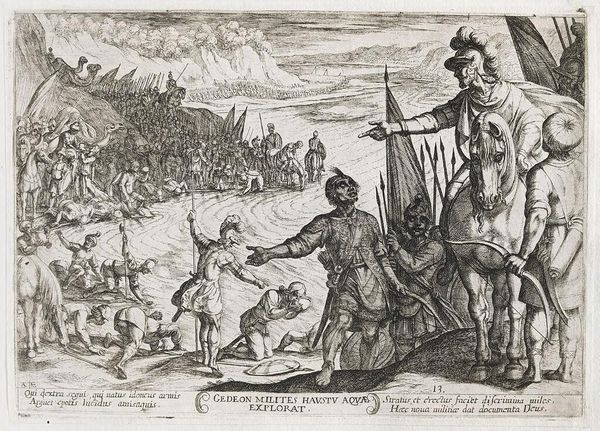
print, engraving
#
medieval
# print
#
old engraving style
#
landscape
#
figuration
#
genre-painting
#
history-painting
#
engraving
Dimensions: height 155 mm, width 233 mm
Copyright: Rijks Museum: Open Domain
Curator: It feels like peering through time’s looking glass, doesn't it? This is "Keizerlijk kamp te Ingolstadt, 1546" or "Imperial camp at Ingolstadt, 1546," an engraving made sometime between 1555 and 1556. Dirck Volckertsz Coornhert really brings history alive, here at the Rijksmuseum. Editor: My first impression is of organized chaos, if that makes sense. All those figures meticulously rendered, yet there’s so much going on it’s almost dizzying. It makes me feel overwhelmed, but intrigued, all at once. Curator: Organized chaos… I like that! And chaos was, indeed, a factor! Coornhert depicts the encampment of Emperor Charles V’s forces during the Schmalkaldic War. Can you feel the political tension bubbling beneath the surface, a clash of empires? Editor: Absolutely. I see a very pronounced structure here. The figures in the foreground are densely packed but with some clarity, really drawing your eye into the chaos. It’s like they are characters in a play that are setting the stage for this historical backdrop of political events. Curator: Precisely! Think about it: this wasn't a photograph; it was crafted. Coornhert’s engraving technique – all those tiny lines building up the scene. It’s incredible how he captures the sheer scale of the army. Look at how the tents recede into the background… it’s an atmosphere. Editor: The use of hatching and cross-hatching is phenomenal here, I concur! These create gradations that evoke light and depth, and provide detailed surface textures and depth. A great example is how those foreground figures, seemingly simple in composition, really pop out in their rendering of garments and facial hair. Curator: And the narrative is subtly clever too. There’s no single, dramatic moment. It's more like an instant overview—a panorama almost, encouraging us to linger and piece the story together ourselves. Editor: The city looms in the background as a visual symbol, maybe suggesting themes of siege and power struggles in genre paintings? The emperor himself commands attention because he has taken charge. The horse motif can indicate stateliness, like we are supposed to associate some regal status with these historical figures in the genre and theme. Curator: It's incredible. A battlefield sketched with lines, shadows revealing the story underneath... Coornhert lets the viewer bring this period to life on their own, piece by piece, using a method that brings everything forward, and still maintains a grip on that deep perspective. Editor: Indeed. The technique creates the experience, ultimately guiding you toward contemplation in historical, religious, or moral allegory... I found this conversation intriguing!
Comments
No comments
Be the first to comment and join the conversation on the ultimate creative platform.
